14 Augmented Reality Ideas for Your Next Business
Primitive augmented reality has been around for decades. But, because of the high cost of the hardware to make it in any way practical for most people, it has, until recently, been little more than a gimmick for geeks like us, or large-scale facilities for military training.
AR trend
Even with price-tags in the millions, it is still cheaper to crash a simulated plane or shoot a simulated tank. AR is considered one of the top mobile technologies.
As the cost of the necessary computing power and hardware sensors have decreased, augmented reality slowly made it way into other industries, such as medical, engineering, and even some short stints into entertainment.
By 2022, 3.5 billion people will use mobile augmented reality applications. 34% of startup firms are currently developing for Google ARCore. Non-gaming apps could account for over half of mobile AR app store revenues by 2023.
The market for virtual reality (VR) and augmented reality (AR) systems is expected to top $215 billion by 2021.
Now augmented reality is a household word that hardly resembles the awkward attempts in the 90s. With the release of new iOS operating system, developers got even more possibilities to create mobile apps with AR.
Whether you are creating playing Pokemon Go, participating in surgery on the other side of our little blue dot, or putting an unbuilt car through its paces, augmented reality has hit the limelight. And for those who know how to use augmented reality for business, the dividends are starting to roll in.
The market for virtual reality (VR) and augmented reality (AR) systems is expected to top $150 billion in the next few years. Projections beyond that are difficult to make since no one is really sure what augmented reality will look like 5 or 10 years out.
This is partially due to companies like Daqri, Blippar, and Layar who have provided the industry with tools so that experienced developers can create their own AR apps. Other big players, such as Apple, Google and Facebook have created toolkits for developers to bring down augmented reality app development cost.
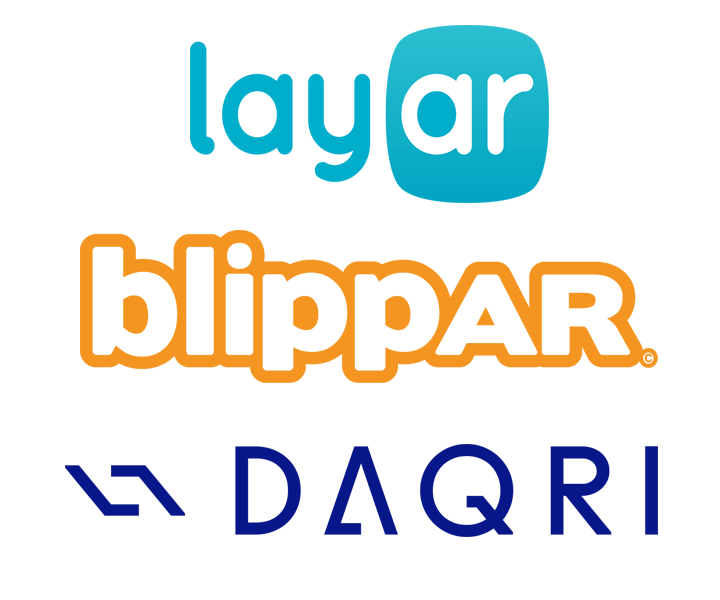
These toolkits can be used to develop AR applications for any industry. Since by definition AR is designed to enhance reality, it could be used in any aspect of the real world. The only exhaustive list of applications would simply be a dictionary. Since public demand for AR aardvarks may not necessarily make it the next big thing, to narrow down the list, we have chosen the top 15 applications to build a business around today.
Types of AR apps
AR Dating Services
In Facebook’s infancy, Zuckerberg made the decision to add a “relationship status” feature to the user profile. Some argue that this was the moment that the site went from a curiosity to a phenomenon. After all, online dating was one of the fastest growing segments in the early days of the Internet.
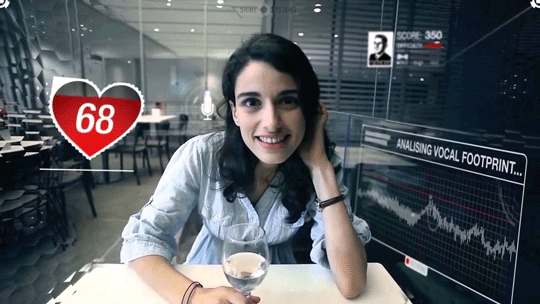
eHarmony opened the door to online dating. Tinder later established itself as the mobile dating king. But, no one has yet cracked open the AR dating experience. This may be surprising, but the potential to be the next big thing is still very much up for grabs. If you build it, they will come!
Sports Apps
There are few people who are more passionate about their hobbies than sports fanatics. Every game has its own statistics, KPI’s and records. Some fans prefer to be live in the stadium, so they can see the action with their own eyes, even if it means they miss out on the instant replays, statistics and commentary available on television. With AR, fans can enjoy the best of both worlds.
They can see the trajectory of the ball, calculate its speed live, or get statistics from other fans on the field.
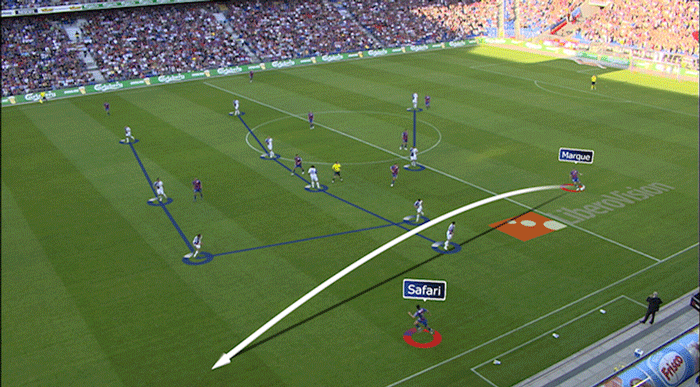
Not only could fans in the seats get data live from shared databases, every phone in the stadium is potentially a broadcast studio, capable of streaming data to viewers, attendees, and app users. Using big data, fans may soon be able to review their own instant replays before the officials or keep their own statistics. Up til now, there have been relatively few examples of using augmented reality in sports, which is surprising since fans are always looking for another reason to cheer.
Specialized Repairs
Even the most experienced technicians or mechanics encounter situations when they need to call home. AR can provide tools to train on expensive or rare machinery, as well as provide field support so that even inexperienced people can fix complex machines.
Whether you want to train people to work on the Mars rover, assemble IKEA furniture or fix a meal, there are countless AR apps waiting to be developed, such a Metaio’s recently developed AR car manual for Audi.
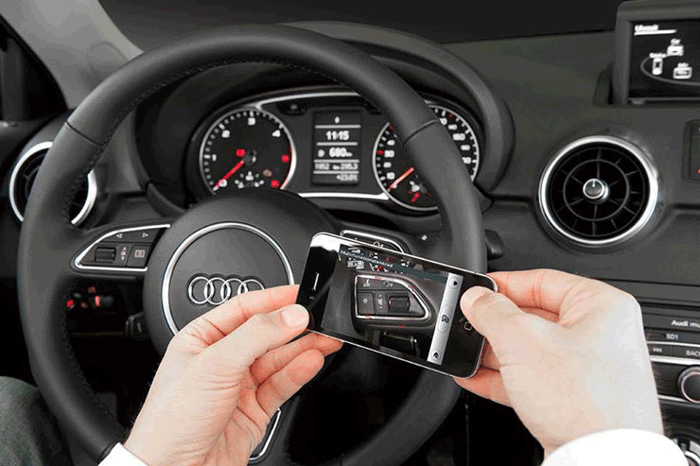
Marketing
Image recognition coupled with marketing strategies open up a whole new world of possibilities for marketing products and brands. By scanning an aisle in the grocery store, the users could get nutritional information, instant promotions, and ideas for recipes – complete with the location of the rest of the ingredients needed in the store.
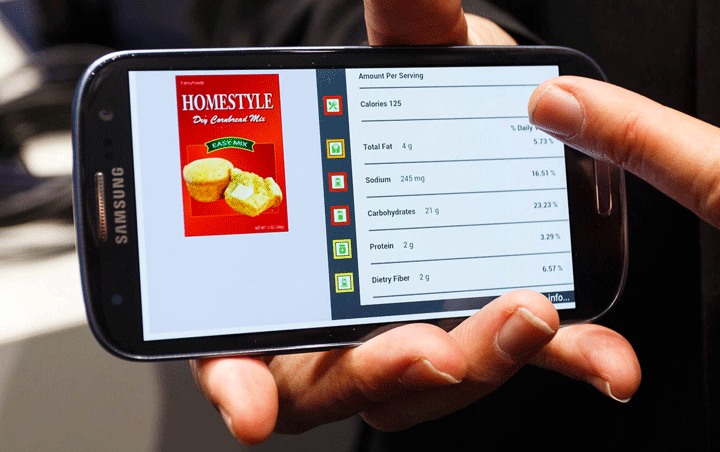
Hand a smartphone to a child in a shopping cart, the entire store becomes an amusement park filled with games to play, wandering characters, and food that they can win. It shouldn’t be hard to figure out how to make an AR app that can capitalize on this captive audience.
Food ordering can also use AR to make the customer experience more interesting. This can be a mere entertainment element in the food ordering industry, that increases loyalty and makes your business more special. For example, you can advertise your restaurant delivery service by adding AR into your offline advertising.
Shopping
Have you ever bought a new piece of furniture, just to get it home and realize that it doesn’t fit, or that it doesn’t go with the rest of the décor and you now have to replace something else just to make it work. IKEA released their AR app that lets you try out your furniture in any room. Just point your camera and drag in whatever furniture you like. It even scales the furniture and you can try various colors and styles instantly.
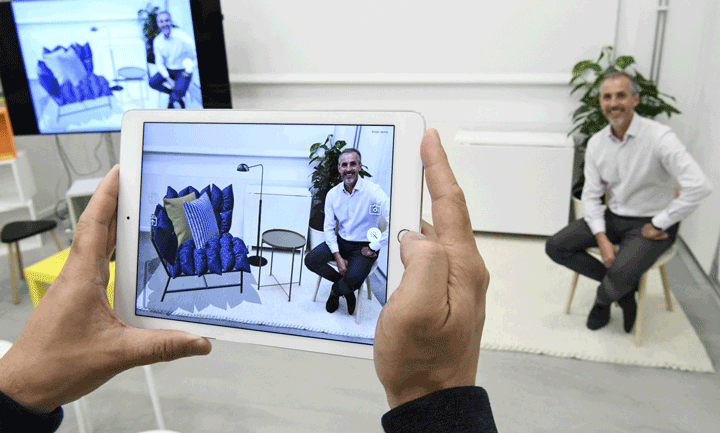
On the flip side, if a customer already has scanned their home, they could come to your showroom and see what their home looks like around your bathtub. Customers can actually bring everything with them, including the kitchen sink!
AR Landscaping
Landscaping is still a very labor intensive and creative job. Because of this, there are very few companies that have decided to delve into the virtual world. But, being able to image what a home and yard would look like for your customer is much more convincing than simply asking them to imagine it.

There are many augmented reality app advantages for landscape design. By simply holding a camera, it is possible to get accurate measurements of the physical features, automatically calculate costs and then immediately let clients walk through their yard and see on their device what it would look like after completion.
Painting Apps
AR works especially well in situations that combine online data with real world problems. A simple AR app on Android or iOS platforms could not only measure walls, but show how a room would look in any chosen color, wallpaper or other finishing, while automatically calculating materials and labor costs.
Building Maintenance
The aim of the chief maintenance technician at a building site is to know the history of every wall, duct and light bulb in a building. Using AR technology, it is possible to record and present all this data. Maintenance workers could have a heads up display indicating the location of water or gas pipes that are buried or inside walls, get the temperature of machinery or pipes, show where riser rooms, elevators shafts or service panels are, not to mention providing accurate directions to navigate the labyrinth of tunnels that sprawl under most buildings.
Want to know how many light bulbs are left? A simple scan of the shelf with your headset and the calculation is automatically tallied and shown in a bubble over the pile. Then cross-referenced with the estimated burnout rate and an automatic order is made for replacements.
Medicine
The tools for medical diagnostics improve every year and augmented reality development has been a part of the process for several decades already. While in the past it was prohibitively expensive, the cost to develop an AR app has dropped enough to make these applications feasible.

Whether it is a doctor being able to see a 3D image of the patients MRI while sitting with them, a coach being able to analyze a players movements to prevent future injuries, or a physical therapist being able to quickly see movements progress in milliseconds, AR applications will soon be able to assist every profession.
Tours and maps
Have you ever wanted to visit the Louvre, hike Mount Everest, or wander through the pyramids of Giza, but you just don’t have the time? If you can’t go there, AR can turn any hallway into a museum, any molehill into a mountain, and any park into a pyramid, that you’ll be able to see through your iPhone or Android device.
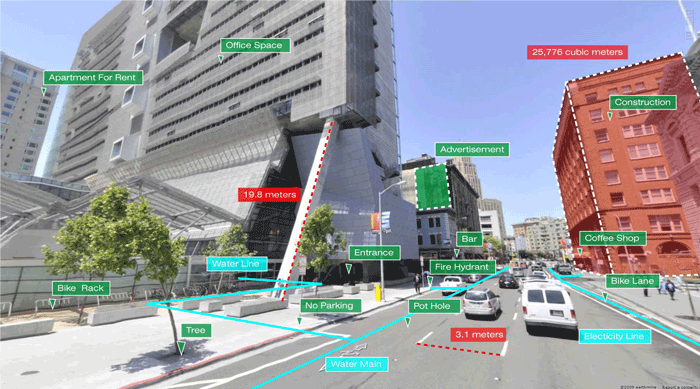
If you are able to go to your favorite places, AR make any tour more interesting by giving more of the information that actually want. Some people want to know the history, some like to hear stories, and others want to get to know the people behind the portraits. AR allows everyone to see more of what they want and makes every experience unique.
You could even record your adventure and then send it to a friend to walk through it with you.
AR teleconferencing
If just the idea of sitting through another status update in a boardroom makes your eyelids heavy, imagine your chief architect instead walking you through the construction site with color-coded sections to indicate the time each phase will be completed. Or, if you could develop an augmented reality app for your engineers to be able to place their car on the boardroom table and then shrink you down so you could walk through each component.
AR teleconferencing is not only about bringing distant people into your boardroom, it is about bringing the world into your head so that you can understand it better.
Data Visualization
If you want to create an AR app for business, there are a few areas that can benefit more from AR than data visualization. Multi-dimensional databases have been in use for decades, but very few tools have been made to effectively image them. AR has the potential to finally add a new dimension (or two) to data visualization.
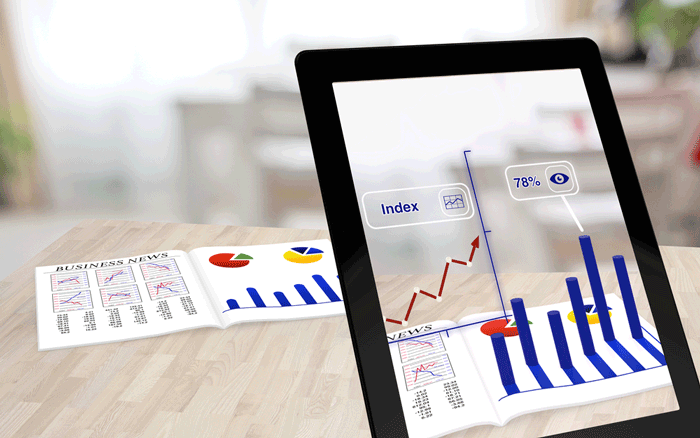
Augmented reality technology for business has mostly focus on collaboration, the interaction between people. AR also has the potential to improve our relationship with data by bringing it to live in ways that we have not to be able to imagine yet.
AR Office spaces
Your environment strongly influences your productivity. What if every employee could have the corner office on the top floor of the tallest building in the city?
Time to relax? Sit back on a beach in Bali.
Want some company? Turn your office into a busy coffee shop.
Need some alone time? Move your desk to the rings of Saturn.
Whatever you need, your office can become.
Collaboration
Need to work through something with your colleague in Tokyo? Meet with them in a room filled with whiteboards that you can both write on together. Don’t speak or read Japanese? Turn on automatic translations. At the end of the meeting, save it to review later or reload it for the next session. True collaboration requires a meeting of the minds, and AR applications can erase many of the barriers inherent to our bodies that keep our minds separate. Distance and language are less of an obstacle for our virtual bodies than for our physical ones.
Education and training
AR in education opens up truly unlimited opportunities for teaching and learning. Augmented reality provides a unique way of learning with immersive real-life simulations.
Technology provides a completely real psychological and physical experience and helps to get an authentic virtual experience that can be realized in real life.
Now medical students can try out their first operations without traumatizing patients, and future astronauts can prepare for their next space mission.
Travel and Tourism
GPS augmented reality mobile apps can show tourist routes and directions to desired destinations, translate street signs, and provide information about attractions. Adding a layer of augmented reality to museums gives users a new cultural experience. So, if you’re going to develop a GPS navigation app, consider adding an AR feature that could be a competitive advantage.
Top 5 AR development platforms
1. Vuforia
Vuforia is the augmented reality SDK that has topped most of the Best Augmented Reality lists for good reason. Vuforia offers a range of AR development products including Vuforia Engine, Studio and Chalk. The software supports marker-based and marker-free AR creation and has several key features that make it one of the best for object recognition and 3D modeling.
2. Wikitude
Wikitude is another great choice for AR software development. This is a relative newcomer to the market, the company was founded in 2008, but has already built a solid reputation. In fact, the Vuforia vs Wikitude debate has become quite active lately. Wikitude is suitable for developing AR apps for iOS, Android and Smart Glasses devices.
3. ARKit
ARKit is a standard AR software development app developed by Apple, so it is not possible to use ARKit on Android phones. The software relies on camera sensor data and additional data (such as from a gyroscope and accelerometer) to detect and analyze the user’s environment for AR rendering.
4. ARCore
ARCore is in many ways analogous to ARKit, another application developed by platform creators for devices using this platform. In this case, the company is Google and the platform is Android. ARCore comes with a standard set of AR features as well as several features such as advanced imagery and multiplayer.
5. ARToolKit
ARToolKit is a free, open-source SDK available for developing augmented reality for devices on various platforms. Besides Android and iOS, ARToolKit is used for AR applications on Windows, Linux and OS X. Originally released in 1999, ARToolKit has undergone various updates. Some of the features included in the latest build include flat image tracking and simple black squares, natural feature markers, real-time speed support, and easy camera calibration.
Conclusion
The possibilities are nearly endless (Websters dictionary has 470,000 entries). Not everyone will necessarily be successful, but over the next few years, hundreds if not thousands of new businesses will be built based on augmented reality or supported by AR services. Mobindustry is ready to help make your vision a reality.
Recent advancements in monetization techniques and AR development tools have made previously impossible solutions very possible – the very definition of disruptive technology. We apply the power of AR to bring to life the ideas of visionary enterprises and individuals.
We are more than happy to hear your ideas, show you what we can do, and see if there is a fit. Feel free to contact us

